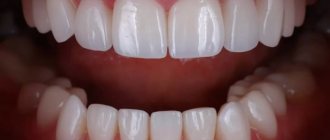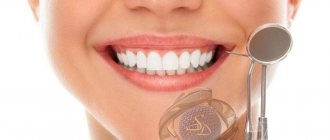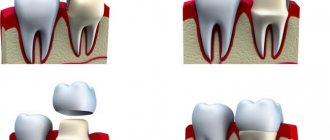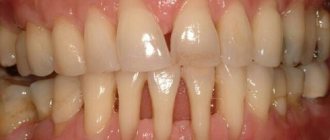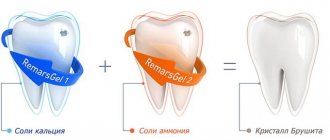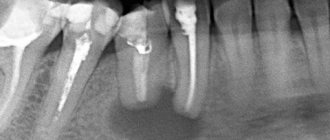The loss of a front tooth is very acute. And this is not surprising. Even if there is a slight darkening of the enamel on the front incisors, the person already begins to feel uncomfortable - he is embarrassed to talk and smile. And the absence of even one tooth along the smile line only aggravates psychological discomfort. Therefore, such problems need to be solved as quickly as possible.
Prosthetics for anterior teeth
are primarily aimed at high aesthetics. Therefore, they use materials that effectively combine strength and high aesthetic characteristics. The Ilatan Clinic in Moscow uses various methods for restoring front teeth using advanced technologies and the latest generation materials. Treatment methods and cost depend on the clinical picture.
Problems arising from missing teeth
The absence of even one dental unit in a row leads to serious consequences:
- Due to the lack of lateral support, neighboring teeth begin to shift;
- if a tooth is lost along with the root, the bone tissue in this area begins to quickly atrophy and decrease;
- chewing function is impaired, which leads to problems with the gastrointestinal tract;
- the bite changes, which leads to deformation of the position of the jaw joint and dysfunction of the umbilical nervous system;
- The shape of the face changes, the upper lip begins to recede, and wrinkles appear.
The longer a tooth is missing, the more severe the consequences will be. If a tooth is lost in the smile area, patients are offered different options for restoring the dentition. The method depends on the clinical picture.
You've probably heard about implant prosthetics, but you're unlikely to know all the nuances...
Dental implantation is an important stage in implant prosthetics.
A dental implant is an artificial root, the basis for installing a single crown, a “bridge” with several crowns, or a prosthesis for the entire jaw in the absence of teeth.
“Why rush, I still have time to place the implant,” you reason.
If you delay replacing lost teeth, you will find yourself having to carry out more expensive and complex prosthetics. At the same time, there will be fewer options available to you (and it’s not about money). Why might this happen?
Aesthetic restoration of anterior teeth
If you need to correct the appearance and shape of incisors or fangs, the best solution is ultra-thin veneers or lumineers. Plates 0.2 - 0.3 mm thick made of ceramic or zirconium are fixed to the outside of the teeth, eliminating all visual defects, making the smile luxurious. Such microprostheses do not require significant intervention in the structure of the teeth. The enamel is prepared exactly to the thickness of the plate, and the veneers are fixed to the surface of the teeth using a special glue (bond). Typically, veneers are installed on 6-10 upper and 4-6 lower teeth along the smile line.
Or maybe make a “classic” denture?
A denture that relies on the remaining teeth will lead to their loss due to excessive stress. The next prosthesis will be removable, but it will not last long. The constantly decreasing bone volume will require periodic alteration (relining).
Complete removable dentures are bad because they accelerate the process of bone resorption (loss).
If years later you think about prosthetics with implants, then, as we said above, the treatment will be more expensive, more complicated, longer, and there will be fewer prosthetic options. The most aesthetic and functional options will no longer be available.
If the front tooth is destroyed, but the root is preserved
In case of significant destruction of the coronal part (up to 50%), the front tooth can be restored using prosthetic crown. The affected tooth is depulped, followed by filling the canals, given the desired shape (prepared), if necessary, the root is strengthened with a stump insert. The crown is fixed onto the prepared stump using dental cement.
For the smile area, it is better to choose all-ceramic or metal-free crowns made of zirconium or aluminum oxide. These materials have a shade and degree of transparency similar to natural enamel. The doctor will select an option so that the restored tooth does not stand out in any way in the general row.
Don’t delay with dental prosthetics
Whatever the reason for delaying prosthetics, we urge you :
Don't miss the opportunity to live a healthy and fulfilling life!
Sign up for a consultation with an orthopedic dentist by phone or on the website >>
Share the link:
- Click here to share content on Facebook. (Opens in a new window)
- Click to share on WhatsApp (Opens in new window)
implantation, orthopedics, articles, surgery topics: bone atrophy, implantation, bone grafting, fixed prosthetics, covering prostheses, prosthetics, prosthetics on implants, removable prosthetics
With complete absence of a tooth
Prosthetics for front teeth in the absence of them involves 2 main methods:
- Installation of a bridge prosthesis
- this method is suitable for replacing 1 to 4 missing incisors. A bridge is a structure of several connected crowns, 1-2 suspended in the center and 2 hollow on the sides, which are attached to adjacent supporting teeth. The main disadvantage of the method is the need to grind and often depulpate the supporting units, even if they are completely healthy. That is, if you need to restore 1 missing incisor, two adjacent ones will have to be injured. - Implant prosthetics
– technology allows you to restore any number of missing teeth in a row. An implant is implanted into the jawbone, which fully replaces the missing tooth root. After the implant has healed, an adapter (abutment) is installed on it, onto which an artificial crown is fixed, identical in shape and color to the natural tooth. If an entire segment of the dentition is missing (3 or more teeth), 2 artificial roots are implanted, onto which a bridge is fixed. - Prosthetics of the front tooth immediately after extraction
is performed using the express implantation method. Immediately after surgical removal of a tooth, an implant is screwed into its socket, an abutment and a temporary crown made of lightweight plastic are fixed onto it. The temporary crown is removed from the bite, does not take part in chewing, it is necessary only to preserve the aesthetics of the smile. After 2-3 months, when the implant has fused with the bone, the temporary prosthesis will be replaced with a permanent one made of durable, reliable material (metal-ceramics, zirconium, etc.).
Prosthetics on implants does not involve injury to neighboring units; implanted implants perform all the functions of a natural tooth root and prevent jawbone atrophy. Implants are implanted once and for all; only prosthetic structures are subject to replacement (if they break or end their service life).
What can lead to tooth loss
Tooth loss begins with periodontal disease.
The first cause of adentia is periodontitis.
The second reason for tooth loss is caries.
The next cause of tooth loss is pulpitis
Other causes of tooth loss include periodontitis and hypoplasia.
Another reason for the development of edentia is diabetes mellitus.
If tooth extraction was previously carried out in a patient with diabetes, then it is necessary to understand that diabetes in general accelerates the atrophy of tissues, bones, and all degenerative processes in the body: from vascular sclerosis to trophism of the limbs. And in this case, it also affects edentia.
Look at the example of one of the patients with insulin-dependent diabetes mellitus, how he developed atrophy. Of course, this does not happen instantly, over several years, but edentia is an inevitable fact, unfortunately:
The professional experience of the specialists of the German Implantology Center allows us to successfully solve even such, sometimes very complex problems associated with atrophy and edentia by performing bone grafting and sinus lifting with subsequent implantation:
This clinical case and its successful treatment are reviewed in more detail - HERE
That is, there are two main reasons for tooth loss:
The first is periodontal disease (periodontitis), the second is caries and its complications (pulpitis and periodontitis), hypoplasia.
There are other reasons, but they are, let’s say, quite exotic and “don’t make a difference.” At the moment, there is no consensus on why caries and periodontitis occur and how to prevent them.
There are many theories, but there is no single answer to the question of how to prevent the development of these diseases. In my opinion, this suggests that these are multifactorial processes that involve genetics, nutrition, hygiene, the nature of the area in which a person lives, and so on and so forth... Why am I saying this? And to the fact that the reasons for development are a separate topic for discussion and we will return to it later, but now let’s look at the consequences of tooth loss.
Is it possible to get dentures without grinding?
Table of contents
- Methods of dental prosthetics without grinding
- Features of the technology
- Adhesive prosthetics without turning: technology
- Procedure
- Nylon dentures
- Implantation and dental onlays
- Advantages of contacting MEDSI
Traditional methods of prosthetics involve depulping and grinding of adjacent teeth.
For this reason, over time, the supporting elements collapse and fall out. This leads to the need to install a new structure. Fortunately, modern technologies make it possible to perform prosthetic teeth without grinding the adjacent ones. This ensures the most productive recovery with faster speed and less discomfort. As a result, oral health risks are also reduced.
Methods of dental prosthetics without grinding
Restoration is possible using removable and non-removable structures.
Microprostheses (inlays and lumineers)
Such products can be used without grinding adjacent teeth. At the same time, inlays and lumineers essentially replace filling materials (liquid composites). Products are made from durable ceramics and zirconium dioxide using the milling method. Thanks to inlays and lumineers, it is possible to restore natural tooth crowns if they are destroyed by no more than 50%. Moreover, the products last 15–20 years and are distinguished by the highest levels of strength. Inlays and onlays fit perfectly to the surfaces of the teeth. There are not even microscopic gaps left between the materials and the crown, which reduces the risk of secondary caries.
Important! Lumineers are used to restore front teeth, and inlays are used to restore back teeth.
Pins and stumps
Products such as single crowns are relevant when the visible part of the tooth is severely damaged.
To strengthen them, special rods are used - pins.
made of translucent fiberglass. It is this material that provides reliable support for the future crown. There is no need to prepare adjacent teeth.
Important! The pin does not withstand severe chewing loads. Its service life usually does not exceed 5 years.
Stump inlays
more durable and reliable. With their lower part they are installed in a healthy root. The upper part of the tab is located above the gum and acts as a support for the crown or bridge.
Adhesive dental bridges
Standard orthopedic structures in the form of bridges consist of 3–6 artificial crowns. All elements are firmly connected to each other. In this case, the 2 outer crowns are placed on the teeth, which are pre-prepared.
Adhesive prosthetics are carried out without turning. These designs differ in that they represent several combined crowns. On the sides of the outer ones there are special wings for fixation. Like a standard one, such a bridge is fixed to the teeth, but is not put on them, but glued. Thanks to this, it is possible to avoid the need for grinding.
Fixed locking prosthetics (CBW)
Crownless Bridge Work technology is similar in implementation to installing a bridge. But here there are no outer crowns fixed on supports. With such prosthetics, small male locks are implanted into the supports (which also avoids the need for turning). After this, a crown or bridge is created with matrix holes for the males. For greater strength, special dental glue is additionally applied to the fastenings. This prosthetic technique ensures high-quality distribution of the chewing load.
Cable-stayed restoration
Such fixed prosthetics ensures the restoration of both one and several elements of the dentition. The technology consists of connecting the crowns with a strong aramid thread, which is fixed around the two outer supports. A thin groove several millimeters deep is created along the perimeter of the teeth. Together with the thread, it is covered with a protective composite for the strength and aesthetics of the structure.
If necessary, the thread can be removed along with the prosthesis. In this case, the grooves are easily masked with a filling compound.
The disadvantage of this dental prosthetics without turning is that over time the composite wears out and the thread shows through, which gives the supports a gray tint. In addition, the supporting elements are constantly subjected to increased loads, which weakens them over time.
Restoration using the Dante method
This technology consists of special laser processing of the teeth outermost from the defect and the creation of microscopic holes (perforations) in them. Then a carbon frame is created between the supports (nylon, nylon and fiberglass fibers are also used as a frame). On this basis, a composite crown is built up.
The technique is difficult to implement and has a high cost. In addition, uneven edges appear in the restoration area, in which food debris can accumulate and pockets of bacteria develop, which can cause local periodontitis or gingivitis.
Removable dental prosthetics without turning
Acrylic, polyurethane and other structures are indicated even with complete edentia (absence of chewing elements). They are also used when 1-2 teeth are missing. The structure is secured with clasp hooks made of nylon, soft plastic or metal.
Features of the technology
Adhesive and other options for prosthetics without turning differ in a number of features.
The main ones include:
- quick installation options
- maintaining the load on bone tissue and ensuring its normal nutrition
- preservation of the upper part of the crown and the neurovascular bundle of healthy neighboring teeth, which helps maintain their health
- no risk of significant tissue injury
- short period of recovery and adaptation to the design
- possibilities for installing a prosthesis on filled teeth
- aesthetics
- affordable price
Adhesive prosthetics without turning: technology
This technology is one of the most popular.
The procedure for such restoration includes several stages:
- creating notches in the area of chewing molars
- determining the optimal length and impregnation of the reinforcing tape with special glue
- laying the tape in the recess, giving it the correct shape and polymerization
- modeling
- fixation on the formed prosthesis structure
The main advantage of the technology is its safety. In addition, this type of prosthetics is accessible.
Procedure
Any options for prosthetics without turning are implemented by an experienced doctor. The procedure includes several stages. This:
- Patient examination. First, the dentist examines the oral cavity and takes x-rays to assess the condition of the pulp cavity and dental tissue.
- Preparation. Prosthetics begin only after sanitation of the oral cavity, which involves treatment of caries and elimination of all existing foci of inflammation. After this, the doctor makes impressions and selects the shade of the crowns
- Positioning. Determining the location of the structure fastenings and their further installation
- Manufacturing and installation of the prosthesis itself
Important! The procedure for implementing the restoration method without turning largely depends on the chosen technology.
Nylon dentures
These products are also popular when there is a need for prosthetics without tooth preparation. The prosthesis can be either completely removable or conditional. Nylon, which is a thin and flexible material, allows you to restore several teeth in a row or an entire row.
The prosthesis is made from it according to a standard scheme with the creation of impressions, casting of the frame and fastening of the required number of elements to the base.
Unfortunately, such products do not last long, but at the same time they are comfortable to wear, hypoallergenic, durable and do not require complex care.
Implantation and dental onlays
Implantation is considered the most effective method of prosthetics without turning. Suitable for restoring one or all teeth at once.
Implant installation is carried out in several stages:
- Survey
- Bone tissue augmentation (in case of its deficiency)
- Deepening of the gums and implantation
- Abutment installation
- Taking an impression of the jaw and making the required number of crowns
Today, there are several options for such prosthetics (including those with one-stage loading, when immediately after removal an artificial root is implanted and a crown is placed on it). The appropriate technique is selected by the doctor, who first carries out the necessary diagnostics and takes into account all the individual characteristics of the patient.
The main advantages of such prosthetics without grinding adjacent teeth include:
- long service life of the structure
- no risk of bone tissue atrophy
- strength of the resulting structure
- no discomfort for the patient during use
Advantages of contacting MEDSI
- Complete list of dental services.
Our dentists provide both examination of the patient and installation of dentures. You can turn to them for sanitation of the oral cavity before restoring teeth, for a sinus lift procedure, etc. - Experienced doctors.
The clinic's dentists have the necessary knowledge and skills to implement various options for prosthetics without turning. At the same time, they are ready to select for each patient the technology that will correspond to his individual characteristics, wishes and financial capabilities. - Modern techniques.
Thanks to them, all procedures are carried out in a comfortable and safe manner with maximum efficiency. After recovery, the patient will not experience any discomfort and will be able to return to their normal lifestyle. - No queues and the opportunity to visit the clinic at a convenient time
To clarify the conditions for prosthetics without turning and make an appointment with a dentist, just call +7 (495) 7-800-500. Our specialist will answer all questions. Recording is also possible through the SmartMed application.
What implants are installed at the WHITE NIGHTS clinic?
We work with five world-renowned implant systems:
1) Alpha Bio (official website of the company)
2) Nobel Biocare (official website of the company)
3) Astra Tech (official website of the company)
4) Dentium (official website of the company)
5) Ankylos (official website of the company)
Every implant manufacturing company provides a lifetime warranty.
Which system to choose depends on the recommendations of the doctors (surgeon and orthopedist) who draw up the treatment plan, and your financial capabilities.
Indications
Veneers can be installed when minor defects are diagnosed. First of all, this applies to cracks and chips that appeared due to the abuse of solid products or after an injury. Also, overlays will be an excellent solution for darkening of the enamel after depulpation or congenital yellowness, which cannot be dealt with using classic bleaching. Previously installed fillings may have a different shade and differ from healthy teeth, and a thin ceramic plate will mask this defect.
They also allow you to eliminate malocclusions, that is, curvature and incorrect placement of individual units relative to each other. In order for a veneer to last a long time, absolutely all teeth must be present in the oral cavity. It is especially important that the chewing elements are preserved. Otherwise, the risk of plate destruction will be quite high due to the fact that the entire load will fall on them. The final decision on the advisability of installation is always made by the attending physician.

